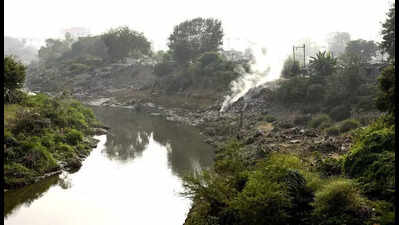- News
- VMC wants mining royalty on dredged silt waived
VMC wants mining royalty on dredged silt waived
Vadodara: The desilting and resectioning of the Vishwamitri to increase its carrying capacity and avert floods will lead to the removal of 15 to 20 lakh cubic metres of silt from the riverbed. While a detailed plan for the dredging has been drawn up and tenders floated, the disposal of this material has posed a major challenge.
According to details shared by Vadodara Municipal Corporation (VMC) with the elected wing, the report of the committee revealed the massive amount of material that will be removed from the 24km of the river in the city. The committee suggested that this material be used by VMC, for the new ring road or to raise embankments along the river wherever necessary.
The VMC had struggled to find a place for construction waste from the razing of various unauthorized structures in the city in 2018. It ended up dumping this waste into the Vishwamitri and along its banks, but was forced to remove it after environmentalists raised the issue and the Gujarat Pollution Control Board issued notices to the civic body.
The amount of material removed from the Vishwamitri will be much higher this time and will present a challenge to the VMC. The civic body is also concerned and wants the material disposed off as soon as possible after excavation. VMC commissioner Dilip Kumar Rana said excavated earth is considered a minor mineral and royalty is collected on it by the state govt.
Environmentalist Rohit Prajapati said that ideally, segregation of waste from the dredged material should be done as it contains plastics and other waste. He said the civic body has a limited capacity for segregating waste compared to the amount of material that will be removed.
Prajapati added that under no circumstances should the removed silt be dumped in depressions in the city. "These depressions are where water flows and then percolates underground. If these are filled, it could worsen waterlogging in the city," he said.
End of Article
FOLLOW US ON SOCIAL MEDIA
Visual Stories
Hot Picks
TOP TRENDING
Explore Every Corner
Across The Globe










